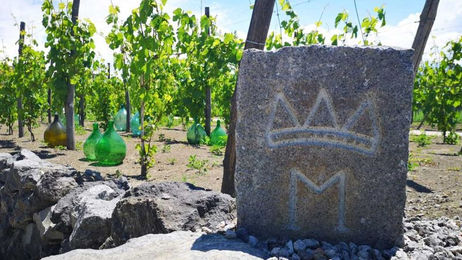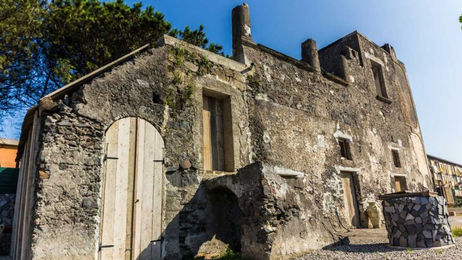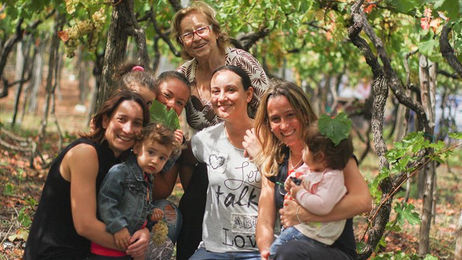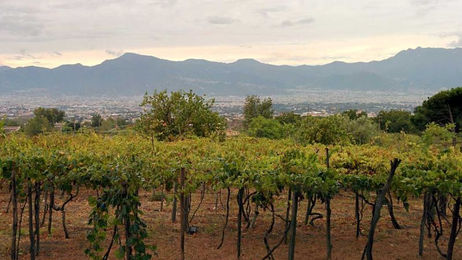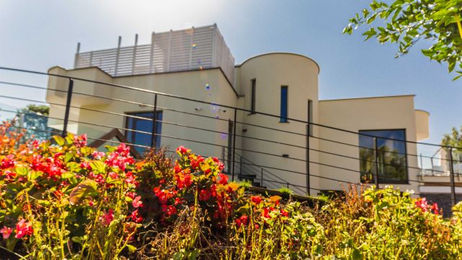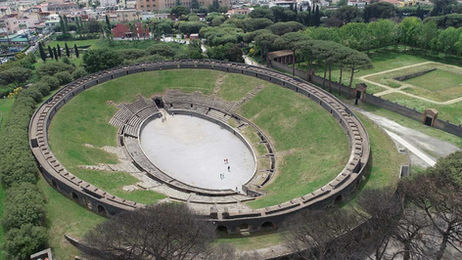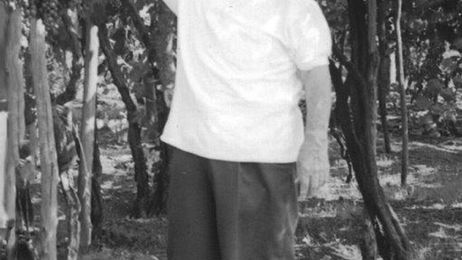
Bosco De' Medici
Campania

About the Winery
Bosco De' Medici cellar is the story of two families, Palomba and Monaco. It was built with a strong emotional connection after a long partnership, that ended up by making Nonno Raffaele's dream come true. Raffaele Palomba wrote the first chapter of this journey: his passion for growing grapes brought him to buying his first vineyard on the slopes of Mt. Vesuvius. In the 1970s Raffaele completely devoted himself to those lands where he produced high quality grapes that immediately became highly appreciated by other local wineries. Of course, he also made some wine for his family. There were no commercial ambitions, just pure passion and love for his land. And right there in those vineyards, during the following years the connection between the families has become strong and long living. The sunny afternoons, spent among the rows, the days of harvest and all the occasions when they enjoy time together and wonderful panorama. From the original vineyard you can admire the whole territory, starting from the south of Naples to the sea and the beginning of the Sorrento Coast. So, in 1996 Gaetano Palomba (Raffaele's son) and Franco Monaco decided to found the Bosco De' Medici cellar. The name of the winery comes from the discovery of a border sign where were carved the letter "M" and a crown, which is the emblem of the Medici, the noble dynasty from Florence that moved to the Kingdom of Naples in XVI century. That sign was found in a vineyard that was likely property of a branch of the Medici family. In the two following decades, after establishing the winery, Bosco de' Medici continued to dedicate their efforts to the production of autoctone grapes, even after the death of Nonno Raffaele. In 2014 the new generations of Palomba e Monaco took the helm. The sons of Gaetano and Franco, Antonio e Giuseppe completed the project: building of the cellar in Pompeii and launching the first official vintage of Bosco De' Medici wines. Antonio Monaco and Giuseppe Palomba finally gave a definite form to what that had been a dream of Nonno Raffaele: a wine made in Pompei, obtained from native grapes grown by the family. In the first official vintage (harvest 2014) Bosco de' Medici produced about 8,000 bottles. Since then, the production has slowly grown every year, reaching 28,000 bottles with the harvest 2019.
Campania
The region has strong historical links to wine and vine, dating back to the 12th Century BC, and is one of Italy's very oldest wine regions. The considerable influence of ancient empires, including the Greeks, Romans and Byzantines, means some of this area's varieties have historical legends attached. The area is also famous for producing Falerno (Falernum), one of the most ancient wines in Italy.
Despite being ensconced in tradition, today's wine styles can range from fruit forward and youthful to robust and well-structured. The whites are known for their aromatic characters, often redolent of the local flora. The reds (mainly from Aglianico) have big personalities which require a little aging.
Dynamic and innovative methods have helped improve the quality of Campania's wines, specifically through better vineyard management, harvesting methods and cellar techniques.
A particularly notable name in the world of Campania wine is Antonio Mastroberardino. His pioneering combination of tradition and innovation make him the most respected, experienced and knowledgeable winemaker of the area.
The region is home to a quartet of DOCGs; Aglianico del Taburno, and Taurasi for red wines, plus Fiano di Avellino and Greco di Tufo for whites. There are also 15 DOCs and ten IGPs, including the region-wide designation. source: wine-searcher.com

Vineyard(s)
Ratings & Reviews
Title | Item | Vintage | Publication | Score | Review |
|---|---|---|---|---|---|
Bosco De' Medici | 2023 | 94 | One can taste the acidic volcanic soils in this streamlined 100% Piedirosso: It's racy, feminine, and graceful with a streak of the exotic, as shown through flavors of cocoa, cherry, ylang-ylang, clove, and cinnamon that merge with basil, linden, and oregano. | ||
Bosco De' Medici | Pompeii Bianco | 2023 | 89 | Almond, apple and chamomile on the nose, with a whiff of lemon peel and varnish. It’s medium-bodied, waxy and lightly mineral. Macerated and fermented in amphora. Drink now. | |
Bosco De' Medici | Pompeii Bianco | 2023 | 95 | It is already a major selling point for this wine that it comes from Pompeii, and if you don’t know why that is cool or where or what Pompeii is, you really need to look it up. But we can immediately dispense with history and geography because the wine is fascinating in its own right. Made entirely from the Caprettone variety, it was macerated in amphorae, which makes perfect sense in Pompeii — but let’s stick with the wine. Skin contact from maceration lends lots of flavor details on a base that recalls apricots (fresh as well as dried) with undertones of tangerine, some floral aromatic topnotes, and a very long finish. To be clear, this is not a weird “orange” wine or somebody’s “natural wine” ideological statement, but rather a unique white with medium-plus body that you could pair with robust dishes as you might a great old vine Semillon, such as the spectacular one made by Boekenhoutskloof in South Africa. That’s a rare wine, but so is this, so there aren’t many points of comparison available. Completely compelling. Thank heavens for Italy. | |
Bosco De' Medici | Pompeii Rosso | 2023 | 88 | Fruity, round and pulpy with red berries, grilled herbs and warm spices on the nose. Medium-bodied, this has velvety tannins, soft character on the palate and a fruit-driven, evasive finish. Drink now. |






